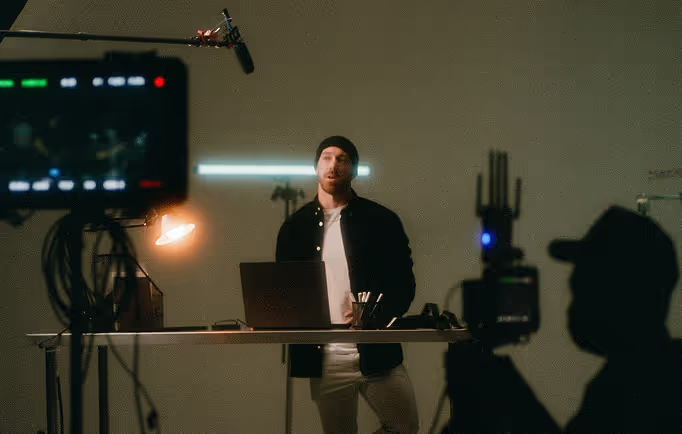Why Animated Explainer Videos Are So Good At Building Customer Trust

With a lack of customer trust comes a lack of customers. After all, who wants to do business with someone they don’t trust? Consumers need to know that they’ll get what they’re paying for, that they can rely on the product not to break down, and that they can trust the business not to betray their core values. Building that trust is crucial for new businesses, and maintaining that trust is key for successful businesses. Animated explainer videos are a surprisingly strong way to present a new product or brand with a solid undergirding of trust between you and the viewer.
1) animation is especially un-ad-like
Here’s a hard yet obvious fact: people these days don’t trust traditional ads. And who can blame them? Some sleazy salesman in a business suit yelling catch phrases at us through a TV isn’t exactly an appealing idea.
But here’s a useful and slightly less obvious fact: animated videos occupy a trusted space in many of our minds. Due to associations with favourite childhood movies and Saturday morning cartoons, we don our nostalgia goggles and let animated ads run a little further than we might for a live action advertisement. This initial trust is built by providing immediate value – art, entertainment, and whimsy – all of which are just a little more exciting than Salesy McSalesman.
2) people know whether you’re talking to them or simply talking around them
You ever have a conversation with someone who’s talking at you rather than to you? It’s hard to even call it a conversation when it feels like you’re less of an equal participant and more of a brick wall for the speaker to bounce their thoughts off. The same goes for modern video advertising — if you’re not speaking to your audience and creating your content with them in mind, you’re going to lose their trust in seconds. Gone are the days of programmed television where a viewer simply had to be watching at the right timeslot to be considered ‘the audience’. Now, if you haven’t nailed speaking to your target market with the right tone, style, and values, they can simply click away in seconds or, worse, never stumble upon your video at all.
Explainer videos work at this issue by specifically framing a message around who the audience is and what their current needs are. This is often presented in a problem/solution format, where the video identifies something in the viewer’s life that could be improved or a topic they need more insight on, and then offers to solve it. Other times its more effective to use an experiential format, where the mood and visual style sets a tone for the brand ‘experience’ and the culture the viewer wants to identify with (think sleek, upbeat ads for Apple products, or summery and youthful Coca-Cola campaigns). These video formats all build trust by following the premise of structuring the video around who the viewer is and connecting with their world, rather than serving up a ‘come one, come all’ trough of content that speaks around the viewer, not to them.
3) explainer videos empathise with the viewer’s pain points
Adding onto the benefits of the problem/solution video structure, explainer videos look for common, shared problems facing the audience and build trust with this sense of communal emotion. By summing up the problem concisely, explainer videos are able to show insight into the viewer’s experience and needs – a marker of active listening. Then the explainer goes the extra mile by offering a solution that aligns with the viewer’s values – a marker of proactive listening. It goes beyond “I see you, your needs, and your values” and into demonstrating a community where those needs are understood, appreciated, and worked on.
4) strong communication is at the forefront
Strong communication skills are a core part of building trust in both personal and business relationships, because it shows an ability to express yourself honestly, actively listen, and reliably engage with others. But in an age where the phrase ‘strong communication’ is often overused as a catch-all term, what exactly does it mean to be a good communicator? Among the many different modes of communicating, three qualities stand out as being the keys to communication success: 1) Clarity, 2) Conciseness, and 3) Connection. A animated good explainer video aims to hit all three of these points by very nature.
Firstly, animated explainers are stylised with a clean graphic art style which promotes visual clarity at all times. Combined with audio narration and sometimes textual graphics, explainer videos work at all angles to make sure the message is as clear as possible.
Secondly, explainer videos are short by nature – they’re known for laying it on the table quickly and concisely. As well as being a marker of strong communication, this also helps prevent getting cut off early by short attention spans.
Lastly, the magic touch is the connection we create through strong communication; that spark of understanding between one human and another; that bit of relatability or humour or genuineness that really draws it all together.
5) promoting proactive interaction
Yep, that’s a lot of ‘pro’s and ‘act’s – which is appropriate because this point is all about how it’s a pro to demonstrate your ability to act. A final step in building trust is action: going beyond simple words and promises and showing up when needed. This is why the call to action in an explainer video is so crucial. The essential call to action isn’t just a ‘buy now’ cue – it’s a two way testament to the relationship between the consumer and the brand, a statement that says “I trust you enough to take this step of real interaction”. When done correctly, it functions as a strong invitation for the viewer to further their relationship with you, the brand, and/or the product they’re looking at.
Start a






